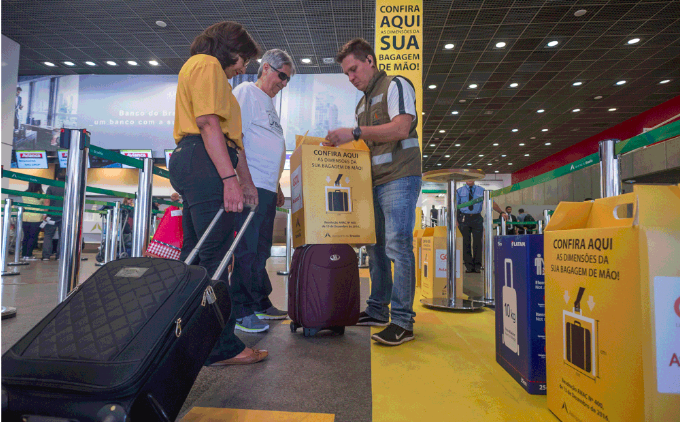By André Catto
The case of a woman thrown off a Gol airplane in the early hours of Saturday (29) raised questions about the rules for carrying personal items on flights.
According to a specialist interviewed by g1, the aircraft captain is the highest authority.
His determination counts as long as he does not use excessive power and follows the Brazilian Aeronautical Code (see below).

In the case in question – called racism by a witness – the captain and crew asked the black woman to check her hand luggage before taking off from Salvador to São Paulo.
She refused, claiming that her notebook was in her backpack and would be damaged if she checked it in.
The airline staff ordered her to either check out or leave the flight.
After the expulsion – carried out with the support of three Federal Police agents – Gol said in a statement that the woman did not continue the trip because she “did not accept the placement of her luggage in the correct and safe places for suitcases and, for operational safety, could not continue the flight.”
The company also regretted the inconvenience and stressed that it is still investigating the case.
The woman’s lawyer said that he saw structural racism. He also said that she was very upset.
AFTER ALL, CAN PASSENGERS BE FORCED TO CHECK IN CARRY-ON LUGGAGE?
For aviation law specialist Felipe Bonsenso, depending on the situation, yes.
He explains that no article in the Brazilian Aeronautical Code directly establishes the obligation to check-in.
This definition, therefore, is up to the companies, considering whether or not there is space inside the aircraft.
“By the Brazilian Aeronautics Code, the commander and the crew have authority inside the aircraft.”
“Therefore, if, in the view of the captain and crew, there is no more room for luggage, the passenger cannot push in the compartment. He will have to check it in,” he explains.
He ponders, however, that this cannot be done arbitrarily.
In other words, if there is space and the hand luggage is within the National Civil Aviation Agency (ANAC) rules, there is no reason to demand that it be checked in (see below for weight and allowances).
“If it’s a backpack and fits in the space in front of the seat, for example, it’s allowed. If it’s a laptop, you can keep that item, even using the space allotted in the front seat.”
HAND LUGGAGE RULES
Anac establishes that the passengers are entitled to take with them, in the aircraft cabin, up to 10 kilos without any extra cost.
The agency says, however, that the airlines determine the dimensions of these bags and the number of volumes.
According to the Brazilian Airline Association (Abear), carry-on luggage must have the maximum dimensions of 55 cm X 35 cm x 25 cm – including handles, wheels, and external pockets -both on domestic and international flights, in addition to respecting the weight limit of 10 kilos.
Also, according to Abear, airlines allow travelers to carry one personal item for free, such as a small purse, a briefcase, or a backpack for a notebook.
The maximum measurements of this item – valid for Latam and Voepass – must be 45 cm X 35 cm X 20 cm.
Gol considers 43 cm X 32 cm X 22 cm as limiting dimensions, while Rima Aviation does not allow the transport of another item on board.
According to Anac, they cannot be carried in hand luggage:
- Weapons – firearms, pressure, electric shock, chemical weapons (including replicas or toy ones), slingshots, pepper sprays, acids, or neutralizers.
- Pointed or sharp objects – axes, ice picks, stilettos, martial arts equipment, switchblades, knives, scissors, pocket knives, or multi-purpose instruments with blades over 6 cm.
- Work tools – crowbars and similar levers, drills, and drill bits (including portable and cordless), screwdrivers and chisels with blades or shafts longer than 6 cm, saws (including portable or cordless), blowtorches, hammers, mallets, nail guns (and similar), alarm devices.
- Explosive, incendiary, or flammable substances – explosives, ammunition, fuses, detonators, fuses, mines, grenades or similar, fireworks, smoke generating cartridges, dynamite, gunpowder, metallic powders and similar, flammable liquids, aerosols, flammable gases, blowtorch lighters, animal repellents in aerosols.
- Chemical, toxic substances, and other hazardous items – chlorine, liquid bleach, batteries with leachable corrosive liquids, mercury, acids, poisons, infectious and radioactive materials.
With information from g1

